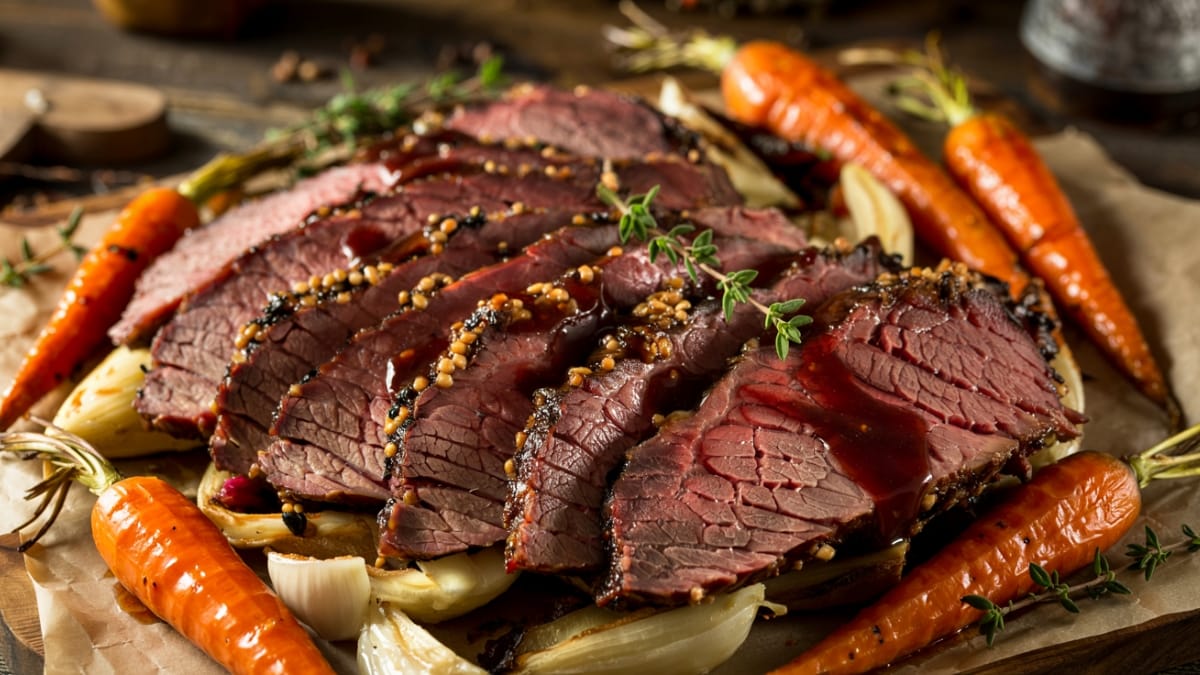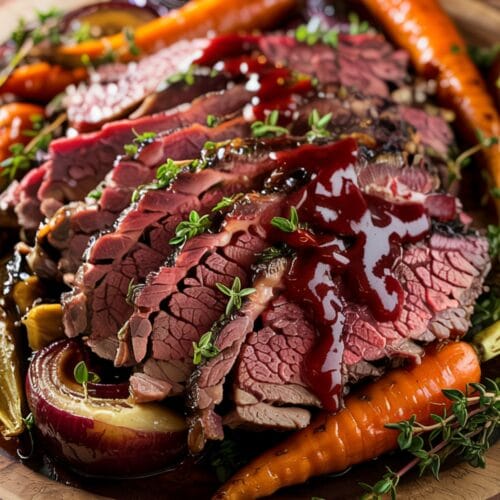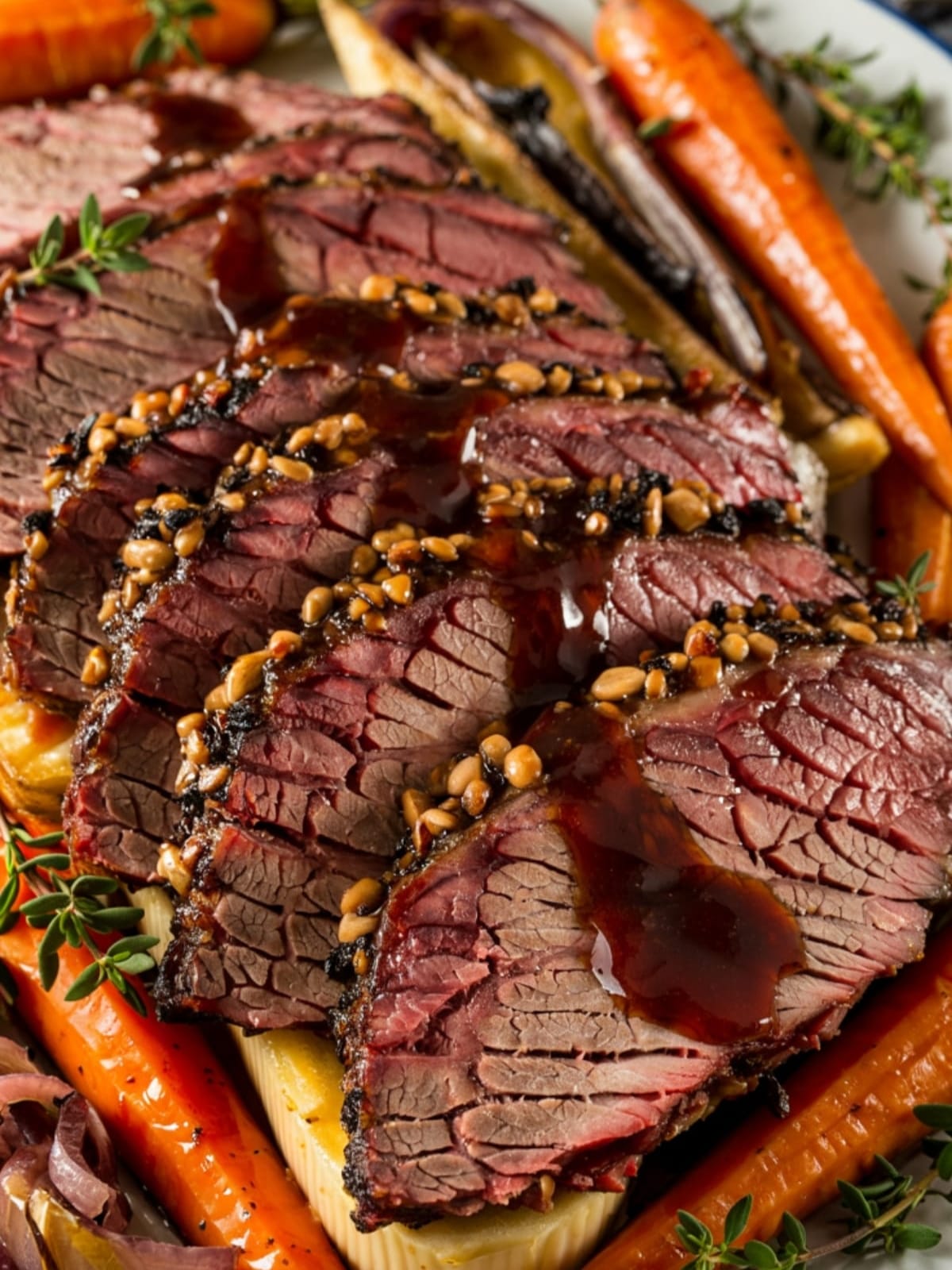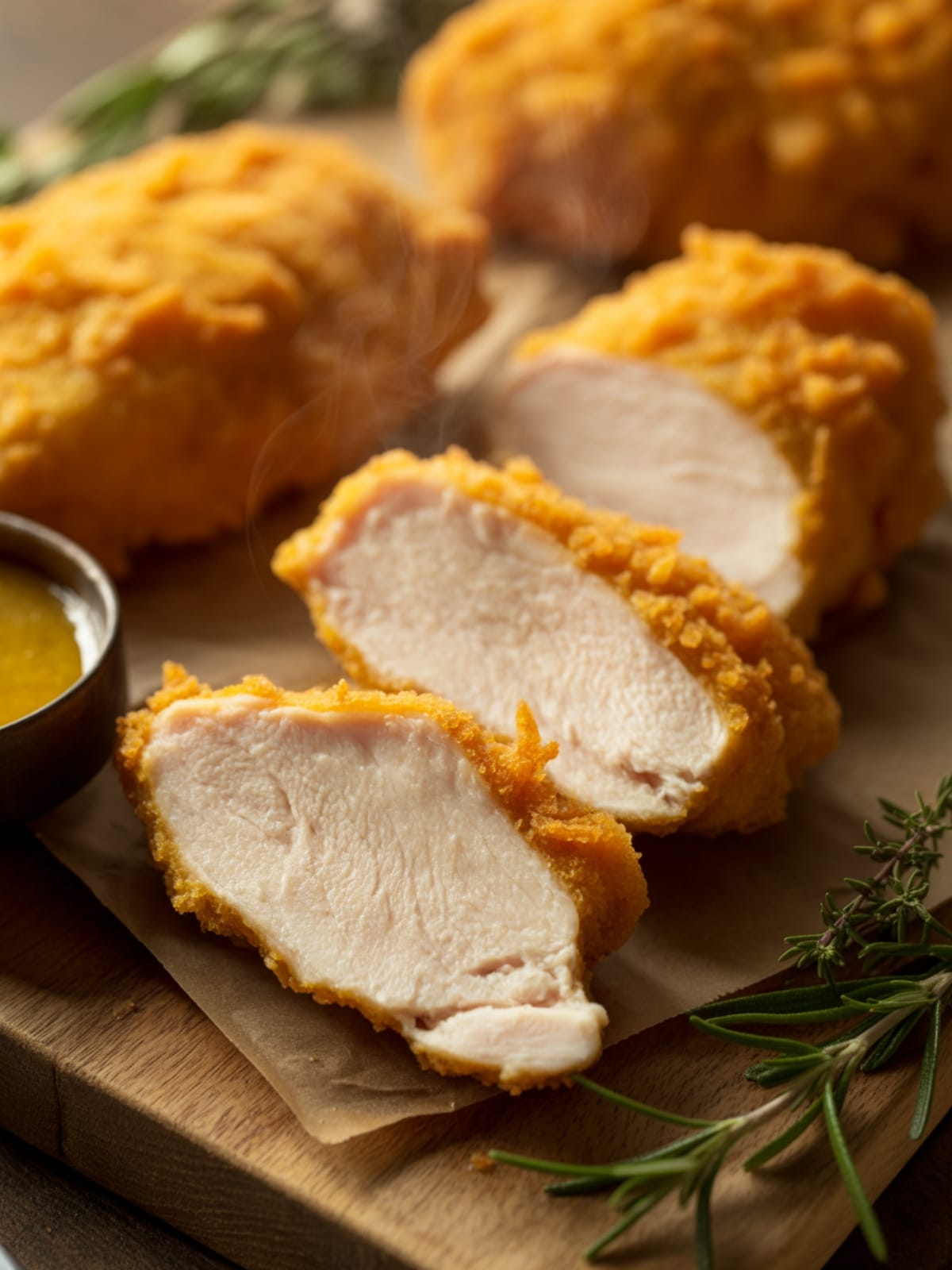Ever found yourself staring at a big hunk of beef brisket in the grocery store, thinking “that looks amazing but way too complicated”? I’ve been there. Let me tell you a secret: cooking a mouthwatering beef brisket with red wine sauce is actually shockingly simple. It’s basically a “set it and forget it” situation that makes you look like a culinary genius. No culinary degree required—just patience.
Why This Recipe is Awesome

This beef brisket with red wine sauce is the ultimate “impress the in-laws” dish that requires almost zero cooking skills. It’s one of those recipes where time does most of the work. The meat gets fall-apart tender while you’re off doing literally anything else. Plus, that red wine sauce? It transforms into this gorgeous, glossy reduction that would make professional chefs nod in approval.
The best part? While everyone’s raving about your cooking prowess, you’ll know you basically just threw some stuff in a pot and walked away. Your secret is safe with me.

Beef Brisket with Red Wine Sauce
Ingredients
- 4-5 pound beef brisket trimmed of excess fat (but leave about ¼ inch for flavor)
- 2 tablespoons olive oil the decent stuff, not the “cooking oil” you use for everything
- 2 large onions sliced into half-moons
- 4 carrots chopped into chunks (peeling optional, I’m not your mom)
- 6 cloves garlic smashed (vampires beware)
- 2 cups dry red wine something you’d actually drink, not “cooking wine”
- 2 cups beef broth low sodium preferred unless you’re into salt licks
- 3 tablespoons tomato paste the secret umami bomb
- 2 bay leaves
- 4 sprigs fresh thyme or 2 teaspoons dried if your herb garden is nonexistent
- 1 tablespoon brown sugar
- Salt and black pepper to taste be generous
- 2 tablespoons butter for finishing the sauce—trust me
- 2 tablespoons flour for thickening, if needed
Instructions
- Preheat your oven to 325°F (165°C). Season your brisket generously with salt and pepper on both sides. Don't be shy—this is a big piece of meat.
- Heat olive oil in your Dutch oven over medium-high heat until it's shimmering but not smoking.
- Sear the brisket on both sides until deeply browned, about 4-5 minutes per side. This isn't the time for pale meat. We want caramelization, people!
- Remove the brisket to a plate and lower the heat to medium. Add onions and carrots to the pot, cooking until they start to soften, about 5 minutes.
- Add the garlic and cook for another minute until fragrant. Your kitchen should smell amazing right about now.
- Pour in the red wine, scraping the bottom of the pot with a wooden spoon to release all those flavorful browned bits. Let it simmer for 2-3 minutes.
- Add the beef broth, tomato paste, bay leaves, thyme, and brown sugar. Stir to combine and bring to a gentle simmer.
- Return the brisket to the pot, fat side up, along with any juices that collected on the plate. The liquid should come about halfway up the sides of the meat.
- Cover the pot with a tight-fitting lid and transfer to the preheated oven.
- Cook for 3-4 hours, until the meat is fork-tender. Seriously, you should be able to pull it apart with minimal effort.
- Remove the brisket to a cutting board, tent loosely with foil, and let it rest for 20 minutes.
- Meanwhile, strain the cooking liquid into a saucepan if you want a smooth sauce (optional). Simmer over medium heat until reduced by about one-third.
- Whisk in the butter for richness and glossiness. If you want a thicker sauce, add a slurry of 2 tablespoons flour mixed with 2 tablespoons cold water.
- Slice the brisket against the grain into thin slices. Seriously, against the grain—it makes all the difference.
- Serve with the red wine sauce poured over the top. Watch as people close their eyes in satisfaction with the first bite.
Notes
- Make-ahead option: This dish actually tastes better the next day, so feel free to make it in advance and reheat gently.
- The fat cap on the brisket should be facing up in the pot so it bastes the meat as it cooks.
- Don’t rush the searing step—proper browning equals maximum flavor.
- If your sauce is too thin after reducing, the flour slurry works wonders.
- For extra flavor, add mushrooms to the vegetable mix.
Calories & Nutritional Info
- Calories: Approximately 450-500 per serving
- Protein: 40g per serving
- Fat: 25g per serving
- Carbohydrates: 10g per serving
- Fiber: 2g per serving
- Sodium: 600mg per serving (varies based on how aggressively you salt)
Common Mistakes to Avoid
- Skipping the searing step – I know it’s tempting to just throw everything in, but those 10 minutes of browning create about 50% of your flavor.
- Using cheap cooking wine instead of drinking wine. If you wouldn’t sip it, don’t cook with it.
- Slicing with the grain instead of against it. This is the difference between tender slices and beef jerky.
- Opening the oven every 30 minutes to “check.” It’s not a soufflé—leave it alone and let the magic happen.
- Not giving the meat enough time to rest before slicing. Patience yields juicy meat; impatience yields dry disappointment.
Alternatives & Substitutions
- No red wine? Use additional beef broth plus 2 tablespoons of balsamic vinegar for acidity.
- Beef chuck roast works well if you can’t find brisket.
- Vegetable variations: Add mushrooms, parsnips, or potatoes during the last hour of cooking.
- Herb substitutions: Rosemary or oregano can stand in for thyme.
- Make it gluten-free by using cornstarch instead of flour to thicken the sauce.
- For a sweeter sauce, add an extra tablespoon of brown sugar or a tablespoon of maple syrup.
FAQs
Can I make this in a slow cooker?
Absolutely! Sear the meat and sauté the vegetables as directed, then transfer everything to a slow cooker. Cook on low for 8-10 hours or high for 5-6 hours. The sauce might need extra reducing on the stovetop afterward.
What’s the best red wine to use?
A medium-bodied red like Merlot, Cabernet Sauvignon, or Pinot Noir works beautifully. Skip super sweet reds, and remember: if you wouldn’t drink it, don’t cook with it. And yes, you should absolutely pour yourself a glass while cooking.
Can I freeze leftovers?
You sure can! Slice the cooled brisket, place in a freezer-safe container, and cover with sauce to prevent drying out. Freeze for up to 3 months. Thaw overnight in the fridge before gently reheating.
My brisket seems tough. What went wrong?
You likely didn’t cook it long enough. Brisket needs time to break down its connective tissues. If it’s tough, pop it back in the oven for another 30-60 minutes. Patience is your friend here.
What sides go well with beef brisket?
Mashed potatoes are the classic choice to soak up that heavenly sauce, but egg noodles, polenta, or crusty bread work too. Add a green vegetable like roasted Brussels sprouts or a simple salad for balance.
Why is slicing against the grain so important?
Brisket has long muscle fibers that can be chewy if you cut parallel to them. Cutting across these fibers (against the grain) shortens them, resulting in tender, easy-to-chew meat. It’s the difference between “melt-in-your-mouth” and “is this shoe leather?”
Final Thoughts
This beef brisket with red wine sauce is one of those rare recipes that’s both impressive and nearly impossible to mess up. The combination of tender meat and rich, velvety sauce creates a meal that feels like a special occasion, even on a random Tuesday. Now go forth and braise with confidence—your reputation as a kitchen wizard awaits!






